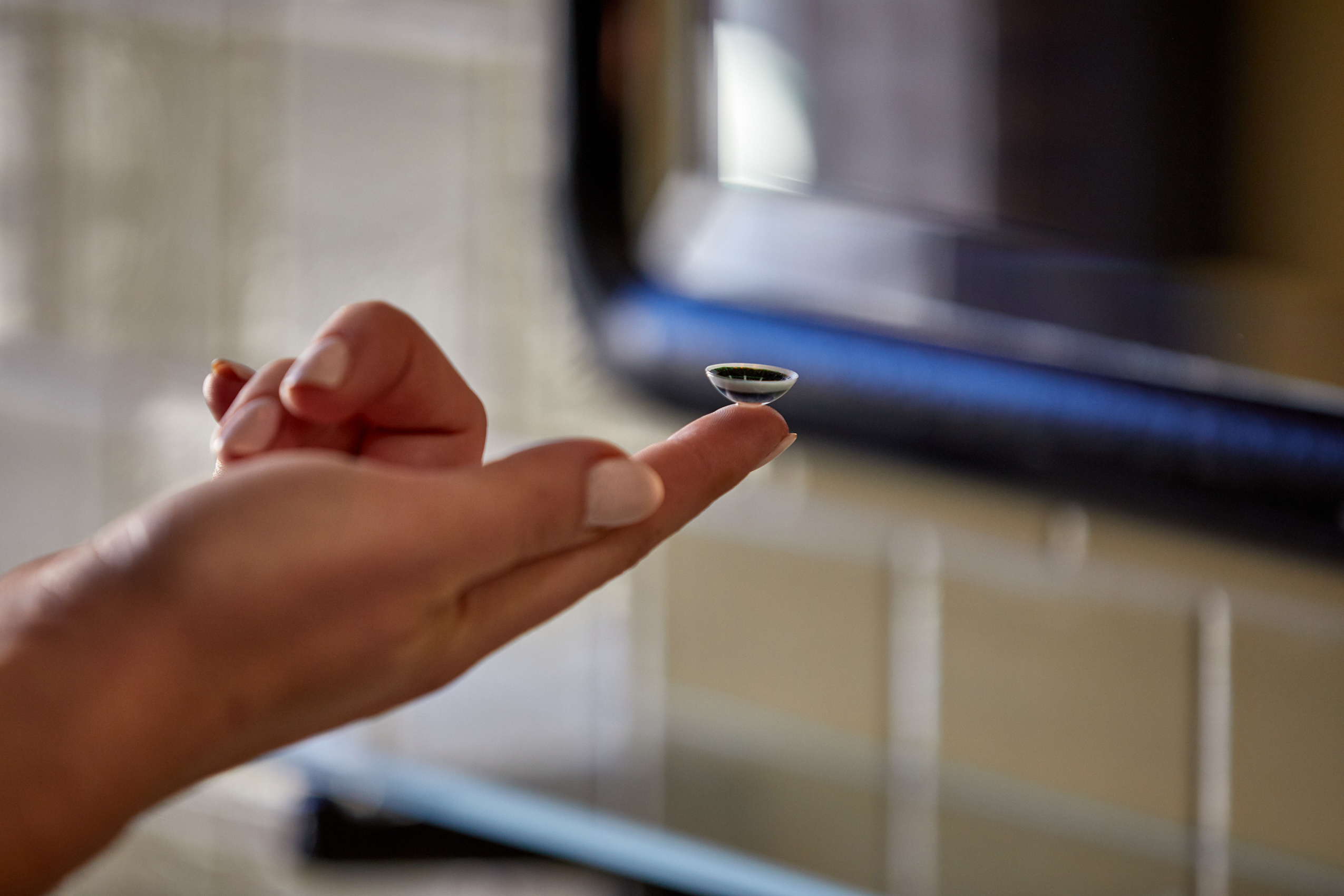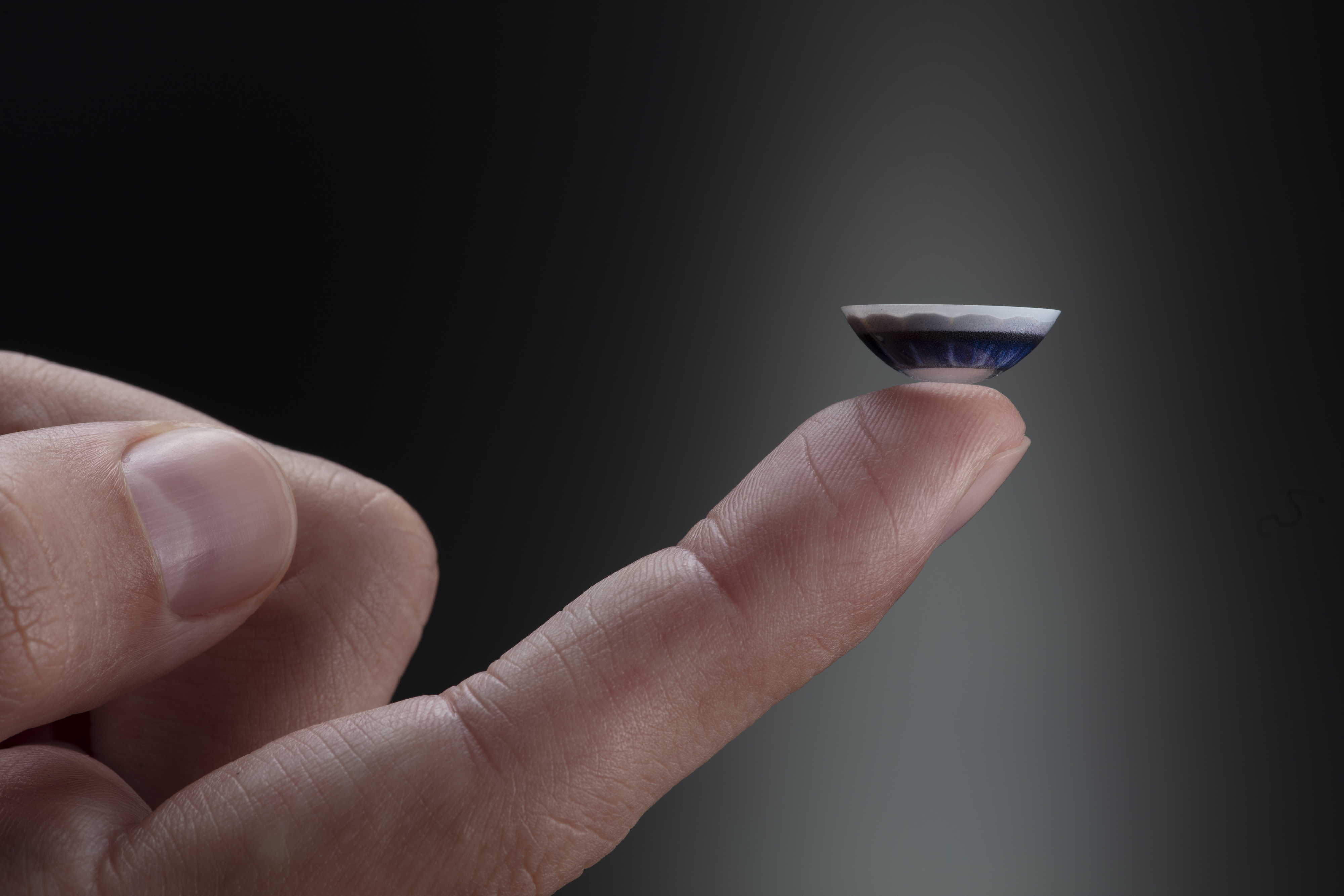Mojo's augmented reality contacts could replace your smartphone
Forget headsets and glasses. These AR contact lenses bestow superpowers on your sight

We've coped with computers around our wrists and in our hands just in time for tech giants to push practical AR glasses on our face. Well, almost. But in the efforts to make our connected devices even less intrusive, Mojo Vision is literally taking a microscopic approach with contact lenses capable of morphing reality.
According to Fast Company, Mojo's been working on AR contacts since 2015. In their most basic form, the Mojo lenses add a film of augmented digital imagery to pupils with a display the size of a grain of sand.
Although the tiny eye computers are at least a few years and clearances away from coming to the market, Mojo proposal is more probable than you may think.
Imaging exiting the airport with severe jet lag and bulky bags, and arrows appear in your vision to direct you to where you parked your car a week ago. Perhaps a pointer materializes over your ride shire when it pulls up to the curb, complete with a card that lets you corroborate the license plate.
Fast Company senior writer Mark Sullivan wore a VR headset to replicate Mojo's intended experience, and following his riveting observations and research he resolves Mojo might just be "a moonshot." Sullivan notes companies with endless resources are grappling with consumer-ready AR headsets.
But for what it's worth, Mojo's sci-fi-certified lenses are real, and they're closer than you might think.
How do Mojo's AR contact lenses work?
Mojo's AR contact lenses look like standard contact lenses, except they hold a display not much bigger than a grain of sand. As the of core of Mojo's capabilities, the microscopic display packs 70,000 pixels across a space that's less than half a millimeter in length.
Sign up to get the BEST of Tom's Guide direct to your inbox.
Get instant access to breaking news, the hottest reviews, great deals and helpful tips.
The display is designed to fall right in front of the pupil, although it's so small that Sullivan said the naked the eye can hardly see it. As such, any potential Mojo adopter will need theirs fitted so the display can manipulate light toward a specific spot of the retina.
Mojo's initial iterations will include a small, single-core ARM-based processor and an image sensor. The company says future versions might incorporate an eye-tracking sensor and a communications chip.
How do Mojo lenses charge and what's the battery life?

In the beginning an internal, film-like battery will power Mojo lenses. VP of product and marketing Steve Sinclair told Sullivan that the solid-state battery should last all day and can be recharged in a case similar to an AirPods one.
But eventually the lenses could receive power wirelessly via a necklace-like device. Mojo will also need an internet connection for some of their functions, like correspondence or up-to-date weather conditions.
Mojo lens privacy: What data will be stored and shared
While FDA clearance will be a major obstacle of Mojo's adoption, privacy perhaps is of greater concern. Mojo is, essentially, asking users to trust the company with their eyeballs. And thus, their personal data.
The lenses will see whatever its wearer sees, so there will be high expectations of Mojo to guarantee the contacts aren't spilling data. Sinclair told Sullivan that the only information the lenses will actively remember are faces they might have to recognize again. And even that facial recognition data will be stored only for a short time.
Then there's the reasonable concern of non-wearers who fear being recorded by another person with Mojo lenses. There's a growing expectation of privacy with digital devices, so Mojo will have its work cut out on establishing an impenetrable privacy reputation when its product finally reaches consumers.
Who are Mojo's AR contact lenses for?

Perhaps the most impressive aspect of Mojo's vision for AR contact lenses is its framework for identifying valuable applications. While visiting the company's offices, Sullivan says he demoed something the Mojo is developing for firefighters.
He recounts seeing the floor plan of the burning building he entered in a simulation. Symbols identified the location of fellow firefighters, while his oxygen tank levels and other valuable information could be viewed near the top of his sight. An alert even flashed, telling him to leave the crumbling structure.
As the daughter of a firefighter (who almost wasn't a firefighter if not for Lasik), I've heard enough stories about the trouble first responders encounter when navigating a smoke-filled room. Any extra minute spent on finding one's bearings could make the difference in saving a life.
According to Sullivan, Mojo is also looking at making AR lenses for those in service industries. For example, with Mojo a concierge can instantly identify, welcome and cater guests based on the hotel's database.
But the version of Mojo closest to market caters to people with vision impairments. The contacts might be able to register the text on a road sign in the distance and display it clearly, or magnify it on the strongest part of a person’s retina. AR lenses could assist people in detecting objects by manipulating the color contrast between them.
For now, though, Mojo has several hoops to jump through before getting certification to sit on people's eyes. Sullivan says the company is already completing some of the studies necessary to proving the lenses’ safety, but it hasn't reached clinical trials and may not for several years.
Outlook
Of course I have reasons to doubt that Mojo can deliver on its ambitions. But Sullivan's experience and the company's clear vision make me want to see such a feat.
One thing is for certain—if Mojo can make consumer-ready AR contacts, it'll make quite the spectacle.
Kate Kozuch is the managing editor of social and video at Tom’s Guide. She writes about smartwatches, TVs, audio devices, and some cooking appliances, too. Kate appears on Fox News to talk tech trends and runs the Tom's Guide TikTok account, which you should be following if you don't already. When she’s not filming tech videos, you can find her taking up a new sport, mastering the NYT Crossword or channeling her inner celebrity chef.

